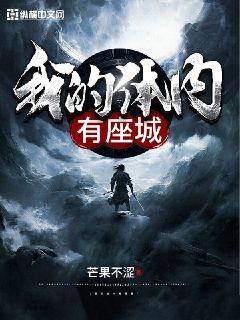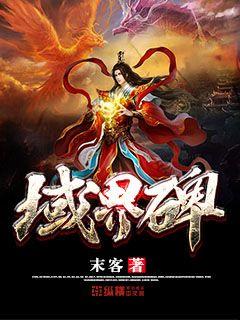jrs直播篮球比赛录像|世预赛中国对日本决赛结果
- 来源:jrs直播网
- 2024-11-22 07:21:00

韧带是连接骨骼与肌肉的重要软组织,在运动过程中扮演着重要的作用。然而,韧带断裂是运动员常见的一种伤害,往往会对运动员的训练和比赛造成严重影响。这种看似普通的伤害实际上是一种隐形威胁,需要运动员、教练以及医疗团队高度重视和及时应对。本文将从四个方面对韧带断裂这一隐形威胁进行深入探讨,并提出相应的预防和处理建议。
1、韧带断裂的发病特点
韧带断裂是指韧带组织在外力作用下发生撕裂或部分断裂,从而导致关节活动受限、疼痛和肿胀等症状。这种伤害常见于篮球、足球、排球等爆发性强、运动强度高的项目中,尤其是在进行一些急停、急转、跳跃等动作时更容易发生。此外,一些无接触性的运动,如单车、羽毛球、乒乓球等,也可能发生韧带断裂。
韧带断裂的发病特点主要体现在以下几个方面:首先,韧带断裂多发生在膝关节、踝关节等承重关节,这些关节在运动中承受较大的外力,韧带承担的负荷也较大,因此更容易出现断裂。其次,韧带断裂一般发生在韧带的中部或薄弱部位,而不是完全断裂,呈现部分断裂的状态。第三,韧带断裂多见于运动训练或比赛过程中,尤其是在运动强度突然增加、动作幅度过大或协调性不佳时更容易发生。最后,一些慢性疾病如糖尿病、类风湿关节炎等也会增加韧带断裂的风险。
总的来说,韧带断裂作为一种隐形威胁,其发病特点决定了其影响范围广泛、恢复过程漫长、预防难度大等特点,这就要求运动员、教练和医疗团队高度重视,采取有针对性的预防和治疗措施。
2、韧带断裂的病因分析
造成韧带断裂的病因主要有以下几个方面:第一,外部因素。在剧烈运动中,韧带会承受巨大的外力冲击,如急停、急转、跳跃等动作,都会造成韧带的过度拉伸,从而导致断裂。此外,一些无接触性运动中也可能发生韧带断裂,如单车、羽毛球等,这主要是由于关节过度活动而造成的。第二,内部因素。包括个人体质因素、慢性疾病因素等。有些人天生韧带较脆弱,加上训练强度过大,容易发生断裂。而糖尿病、类风湿关节炎等慢性疾病也会加速韧带老化,降低其抗拉伤能力。第三,训练因素。长期单一化、高强度的训练,会造成韧带长期处于高负荷状态,容易产生疲劳和损伤。此外,训练前热身不充分、训练时运动技术欠佳等也会增加韧带断裂的风险。
综上所述,韧带断裂的病因较为复杂,既有外部因素如剧烈运动,也有内部因素如个人体质和慢性疾病,训练因素也起着重要作用。因此,预防和治疗韧带断裂需要从多方面着手,针对性地采取措施。
针对韧带断裂的病因,我们需要从以下几个方面着手:首先,做好运动前热身,增强韧带的抗拉伤能力;其次,合理安排训练强度和内容,避免过度负荷;第三,注重训练方法的改进,提高运动技术水平,减少不合理动作;最后,对于一些慢性疾病患者,需要重点关注韧带健康状况,并采取针对性的预防措施。只有从多个角度入手,才能有效预防和治疗韧带断裂这一隐形威胁。
3、韧带断裂的诊断与分级
及时准确的诊断是治疗韧带断裂的关键。通常,韧带断裂的诊断主要包括临床检查和影像学检查两个方面。在临床检查中,医生会通过问诊、视诊、触诊等方式,了解患者的病史和症状表现,如关节疼痛、肿胀、活动受限等。同时,医生还会进行活动试验,如抽屉试验、稳定性试验等,以判断韧带的损伤程度。
在影像学检查中,常用的有X线片、MRI等。X线片可以排除骨折、关节脱位等其他损伤,MRI则可以更直观地显示韧带的损伤程度。MRI检查不仅可以明确韧带的具体损伤部位,还可以判断损伤范围和程度,为后续治疗方案的制定提供重要依据。
根据韧带损伤的严重程度,医生通常会将韧带断裂分为三级:第一级为韧带拉伤,韧带轻度损伤,可以通过休息、冰敷、药物等保守治疗恢复;第二级为部分断裂,韧带中度损伤,需要通过复合疗法进行康复治疗;第三级为完全断裂,韧带重度损伤,需要外科手术治疗。只有及时准确地诊断出韧带断裂的具体程度,才能制定出针对性的治疗方案,提高治疗效果。
4、韧带断裂的预防与治疗
预防和治疗是应对韧带断裂这一隐形威胁的两个重要环节。在预防方面,主要包括以下几个方面:首先,加强韧带力量训练。通过一些专项练习,如抗阻训练、跳跃训练等,可以增强韧带的抗拉伤能力。其次,重视运动前热身。提前做好拉伸、活动等热身,可以有效预防韧带损伤。第三,优化训练方案。合理安排训练内容和强度,避免过度负荷,同时注重运动技术的改进。第四,做好慢性疾病管理。对于糖尿病、类风湿关节炎等患者,需要重点关注韧带健康状况,并采取预防措施。
在治疗方面,主要包括以下几个方面:首先,根据韧带损伤程度采取不同的治疗方案。对于轻度拉伤,可以采取休息、冰敷、药物等保守治疗;对于中度损伤,需要通过复合疗法进行康复训练;对于重度损伤,则需要外科手术修复。其次,注重术后康复训练。通过有针对性的康复训练,可以帮助韧带尽快恢复原有的功能。第三,做好并发症预防。韧带断裂可能会导致关节不稳定、关节炎等并发症,需要重点关注。最后,对于一些慢性疾病患者,还需要结合其基础疾病进行全面管理,以防止韧带再次损伤。
总的来说,预防和治疗是应对韧带断裂这一隐形威胁的两大关键环节。只有通过全方位的预防措施,结合个性化的治疗方案,才能最大限度地降低韧带断裂的发生概率,为运动员创造更好的比赛和训练条件。
总结:韧带断裂作为一种隐形威胁,其发病特点决定了其影响范围广泛、恢复过程漫长、预防难度大等特点。导致韧带断裂的病因复杂,既有外部因素如剧烈运动,也有内部因素如个人体质和慢性疾病,训练因素也起着重要作用。及时准确的诊断对于后续治疗至关重要,医生需要通过临床检查和影像学检查来确定韧带损伤的程度。预防和治疗是应对这一隐形威胁的两大关键环节,预防方面需要从增强韧带力量、优化训练方案、做好慢性疾病管理等多方面着手,而治疗方面则需要根据损伤程度采取针对性的保守治疗或手术治疗,并注重并发症的预防。只有通过全方位的预防和个性化的治疗,才能最大限度地降低韧带断裂的发生概率,为运动员创造更好的训练和比赛条件。
文章摘要:本文将深入探讨罗马王子球员的传奇征程与荣耀时刻。从他的职业起步、关键比赛表现、领袖风范到对球队的影响,全面呈现了他作为一名足球运动员的精彩历程。
1、职业起步与初露锋芒
罗马王子最初是如何踏入足球领域的?在他的青年时代,他经历了怎样的成长与训练?他是如何逐步在球场上展现出与众不同的技艺与天赋?从青训开始,到首次在顶级联赛中亮相,他的成长轨迹如何鼓舞人心?
随着时间的推移,他的技术和战术意识是如何逐步完善的?在成为球队主力之前,他面对过哪些挑战和困难?他是如何通过不懈努力和坚定信念克服这些障碍的?
初露锋芒的罗马王子,如何在关键比赛中展现出自己的身影?他的出色表现是如何赢得球迷和评论家的赞誉的?
2、关键比赛的精彩表现
在罗马王子的职业生涯中,有哪些比赛被认为是他的巅峰时刻?这些关键比赛中,他是如何通过自己的技术、智慧和领导力带领球队走向胜利的?
他在决赛中的表现如何?他的进球、助攻或者关键防守是如何改变比赛局势的?这些时刻如何深深地刻在球迷和历史的记忆中?
不仅仅是胜利,罗马王子在失败中的表现又如何?他是如何面对挫折、重新振作并继续为球队贡献力量的?
3、领袖风范与团队精神
作为一名领袖,罗马王子是如何在球队中展现出他的领导能力的?他的领袖风范体现在哪些方面?
他是如何与队友合作,共同面对各种挑战和压力的?在球队团结一致的时刻,他是如何发挥自己的作用,带领球队向着共同的目标努力?
罗马王子的团队精神如何影响了整个球队的凝聚力和战斗力?他在球场内外的行为和言行是如何成为队友们的榜样?
4、对球队和足球的深远影响
罗马王子不仅仅是一名球员,他对于他所效力的球队和整个足球界有着怎样的深远影响?
他的职业生涯如何激励了后辈球员?他的球风和态度对于年轻球员的成长有着怎样的示范作用?
在退役后,他又如何继续为足球事业贡献自己的智慧和经验?他在教练、管理或者其他领域的成就又如何?
总结:
罗马王子球员通过其卓越的职业生涯和独特的领导力,不仅在比赛中创造了数不胜数的精彩时刻,也深深地影响了球队和足球运动的发展。他的传奇征程不仅仅是一段个人荣耀,更是一部激励和感动人心的足球史诗。
作为一名球员和领袖,他的影响将继续激励和引导着新一代的足球爱好者和运动员,为这项运动的未来贡献自己的力量。
Certainly! Here's the structured article on "Optimizing Training Performance through Nutrition and Diet for Professional Athletes":
**Abstract:**
Professional athletes rely heavily on nutrition and diet to enhance their training performance. This article explores key factors that optimize their performance through dietary strategies. It examines the role of macronutrients, micronutrients, hydration, and timing of meals in maximizing athletic potential. By understanding and implementing these factors, athletes can achieve peak performance and maintain optimal health.
---
**1、Macronutrients:**
Macronutrients play a fundamental role in the diet of professional athletes, influencing energy levels, muscle recovery, and overall performance.
Athletes typically require a balanced intake of carbohydrates, proteins, and fats to meet their energy demands and support muscle repair.
Carbohydrates serve as a primary fuel source, especially during high-intensity activities, emphasizing the importance of adequate intake and timing to sustain performance.
1、Proteins:
Proteins are essential for muscle repair and growth, with athletes needing slightly higher amounts to recover effectively from training sessions.
Timing protein consumption around workouts is crucial for maximizing muscle synthesis and adaptation to exercise-induced stress.
A variety of protein sources, including lean meats, dairy, and plant-based options, offer athletes flexibility in meeting their nutritional needs.
2、Fats:
Healthy fats contribute to sustained energy levels and support overall health in athletes, emphasizing sources like nuts, seeds, and fatty fish.
A balanced intake of omega-3 and omega-6 fatty acids aids in reducing inflammation and optimizing recovery post-training.
Adjusting fat intake based on training intensity and individual metabolic needs helps athletes maintain optimal body composition and performance.
3、Carbohydrates:
Carbohydrates are critical for replenishing glycogen stores and providing quick energy during intense exercise sessions.
Choosing complex carbohydrates such as whole grains and vegetables ensures sustained energy release and supports prolonged athletic performance.
Strategic carb-loading before competitions or high-demand periods helps athletes maximize glycogen storage and enhance endurance.
---
**2、Micronutrients:**
Beyond macronutrients, micronutrients are essential for maintaining overall health, supporting immune function, and optimizing athletic performance.
Athletes require adequate intake of vitamins and minerals to support physiological processes, including bone health, oxygen transport, and muscle contraction.
Key micronutrients such as iron, calcium, vitamin D, and antioxidants play crucial roles in reducing the risk of injury and illness among athletes.
1、Iron and Calcium:
Iron is vital for oxygen transport and energy production, particularly significant for endurance athletes to prevent fatigue and optimize performance.
Calcium supports bone health and muscle function, essential for maintaining skeletal integrity and reducing the risk of stress fractures.
Ensuring sufficient intake of these minerals through diet and, if necessary, supplementation helps athletes meet their unique nutritional demands.
2、Vitamins and Antioxidants:
Vitamins such as vitamin D, C, and E contribute to immune function and recovery, aiding in the repair of muscle tissue and reducing oxidative stress.
Antioxidants from fruits, vegetables, and nuts help mitigate exercise-induced inflammation and support cellular repair processes post-exercise.
Strategies to incorporate a diverse range of micronutrient-rich foods into an athlete’s diet promote overall health and optimize training adaptations.
3、Hydration:
Hydration is critical for maintaining performance and preventing dehydration-related complications during training and competition.
Athletes should monitor fluid intake to replace losses through sweat, adjusting consumption based on environmental conditions and individual sweat rates.
Optimal hydration supports thermoregulation, nutrient transport, and cognitive function, enhancing overall athletic performance and recovery.
---
**3、Timing of Meals:**
The timing of meals and nutrient intake around training sessions is crucial for optimizing energy availability, promoting recovery, and supporting adaptation to exercise stress.
Strategic meal timing helps athletes maximize glycogen storage, enhance muscle protein synthesis, and minimize muscle breakdown.
Pre-exercise nutrition focuses on providing adequate carbohydrates for fuel and minimizing gastrointestinal distress during workouts.
1、Pre-Exercise Nutrition:
Consuming a balanced meal or snack containing carbohydrates and a moderate amount of protein 2-4 hours before exercise provides sustained energy and supports muscle function.
Hydration before exercise ensures adequate fluid balance and enhances thermoregulation during physical exertion, optimizing performance and reducing the risk of dehydration.
2、Post-Exercise Recovery:
Immediately following exercise, consuming a combination of carbohydrates and proteins within the first 30 minutes to 2 hours supports glycogen replenishment and muscle repair.
Timing protein intake post-exercise stimulates muscle protein synthesis, facilitating recovery and adaptation to training-induced stress.
Incorporating micronutrients and fluids into post-exercise meals aids in rehydration, replenishment of electrolytes, and overall recovery.
3、Nutrient Timing Strategies:
Strategically timing meals and snacks throughout the day maintains stable blood sugar levels and sustains energy for consistent training performance.
Adjusting nutrient intake based on training volume and intensity helps athletes meet their energy demands and achieve optimal nutrient timing for enhanced performance.
Individualized nutrition plans tailored to training schedules and performance goals optimize nutrient timing strategies, supporting long-term athletic success.
---
**4、Conclusion:**
Optimizing training performance through nutrition and diet involves a comprehensive approach focusing on macronutrients, micronutrients, hydration, and meal timing.
By understanding the role of each component and implementing evidence-based strategies, athletes can enhance performance, support recovery, and maintain overall health.
Continued research and personalized nutrition plans are essential to meet the unique needs of professional athletes and maximize their athletic potential.
Overall, integrating these key factors into a structured nutrition plan empowers athletes to achieve peak performance and excel in their respective sports.
Certainly! Here's the structured article based on the topic "Kennedy Administration: Prospects and Challenges":
**Article Abstract:**
The Kennedy administration marked a pivotal moment in American history, characterized by both ambitious prospects and formidable challenges. This article explores its impact on domestic policy, international relations, civil rights, and the space race. By examining these facets, we gain a comprehensive understanding of how the Kennedy era shaped contemporary America.
---
1、Domestic Policy Initiatives
The Kennedy administration ushered in a new era of ambitious domestic policy initiatives, aiming to address pressing social and economic issues.
President Kennedy's economic agenda focused on stimulating growth through tax cuts and promoting consumer spending.
Furthermore, Kennedy introduced legislative measures to bolster education and healthcare accessibility, laying the groundwork for future reforms.
The administration's approach to civil rights was initially cautious, but public pressure and grassroots movements pushed Kennedy to support civil rights legislation.
Despite facing resistance from Southern Democrats, Kennedy's advocacy for civil rights set the stage for significant legislative advances in subsequent years.
However, challenges persisted, highlighting the complexities of implementing comprehensive civil rights reforms in a deeply divided nation.
In conclusion, the domestic policy initiatives of the Kennedy administration set ambitious goals and faced substantial challenges, leaving a mixed legacy in terms of implementation and impact.
---
2、International Relations and Cold War Strategy
The Kennedy administration confronted a volatile international landscape dominated by Cold War tensions and ideological rivalries.
Kennedy's foreign policy strategy emphasized flexible response, seeking to enhance military capabilities while avoiding nuclear escalation.
The Cuban Missile Crisis of 1962 tested Kennedy's leadership, as the world stood on the brink of nuclear conflict.
Furthermore, Kennedy's efforts to promote nuclear disarmament and détente with the Soviet Union marked significant diplomatic initiatives.
However, challenges such as the escalation of the Vietnam War and the Bay of Pigs invasion underscored the complexities of Cold War diplomacy.
In conclusion, the Kennedy administration navigated a treacherous international landscape with a mix of diplomatic initiatives and military strategies, leaving a lasting impact on U.S. foreign policy.
---
3、Advancements in Civil Rights
The Kennedy administration played a pivotal role in advancing civil rights, despite initial reluctance and political challenges.
President Kennedy's moral stance on civil rights evolved under pressure from the civil rights movement, leading to pivotal legislative actions.
The landmark Civil Rights Act of 1964, although passed under President Johnson, built on the foundation laid by Kennedy's advocacy.
Challenges such as entrenched racism and resistance in Congress highlighted the complexities of achieving meaningful legislative change.
Nevertheless, Kennedy's commitment to justice and equality laid the groundwork for subsequent civil rights advancements in the United States.
In conclusion, the Kennedy administration's efforts in civil rights, while facing significant challenges, set a precedent for legislative action and societal change.
---
4、The Space Race and Technological Innovation
The Kennedy administration's ambitious goal of landing a man on the moon by the end of the 1960s galvanized America's scientific and technological capabilities.
Kennedy's vision for space exploration aimed to demonstrate American technological superiority and ideological resilience against the Soviet Union.
The Apollo program, initiated during Kennedy's presidency, achieved monumental milestones, including the first manned lunar landing in 1969.
However, the space race also posed significant challenges, including technical setbacks and budgetary constraints.
Despite these challenges, Kennedy's commitment to space exploration laid the foundation for NASA's continued achievements in space science and exploration.
In conclusion, the Kennedy administration's ambitious space exploration goals, while fraught with challenges, left a profound legacy of scientific achievement and national pride.
---
总结:
The Kennedy administration epitomized a period of ambitious goals and formidable challenges across domestic policy, international relations, civil rights, and space exploration. While making strides in some areas, such as civil rights and space exploration, it faced significant hurdles and complexities. Ultimately, Kennedy's presidency left a lasting impact on American society and its global position, shaping the course of history in the 20th century.
文章总结内容第一自然段
文章总结内容第二自然段
### 文章摘要
本文探讨了巴西黑人球员在足球场上的光与影。通过对其历史、挑战、成就和文化影响的分析,揭示了这些球员在全球足球舞台上的独特贡献和不可忽视的影响力。
---
1、历史与背景
巴西黑人球员在足球历史中的起源和演变,以及他们在社会背景中的重要性。
他们如何逐步融入巴西足球的发展,对于巴西足球文化的影响和塑造。
巴西黑人球员如何在种族和社会不公的环境中崛起,并成为国家队的象征。
2、挑战与障碍
巴西黑人球员在职业生涯中面临的种族歧视和挑战,以及如何克服这些障碍。
他们在场上和场外所遭遇的不公正待遇,以及对他们职业生涯的影响。
黑人球员如何通过自己的努力和才华,打破种族壁垒,取得职业成功。
3、成就与荣耀
巴西黑人球员在世界足坛上取得的辉煌成就,包括国际比赛和俱乐部赛事。
他们在球队中的关键角色和影响力,以及如何改变球队的战术和风格。
他们的个人荣誉和奖项,如何成为足球历史上的标志性人物。
4、文化影响与遗产
巴西黑人球员对本土和全球足球文化的深远影响,以及他们在社会上的文化地位。
他们如何成为年轻球员的榜样和社会变革的象征。
他们的足迹如何延续和影响下一代巴西球员和全球球员。
总结:
巴西黑人球员不仅在足球场上展现了耀眼的光芒,还深深刻在了社会和文化的遗产中,他们不仅是足球运动的重要组成部分,更是社会变革和文化传承的象征。
通过他们的故事和成就,我们看到了种族和文化多样性如何在足球这一全球舞台上发挥着重要作用。
文章摘要的内容:PUMA与NBA球员的合作不仅仅是一场商业联盟,它代表了新一代运动风尚的巅峰对话。这篇文章将从多个角度探讨这种合作如何重新定义了运动与时尚的交汇,揭示了其在文化影响、市场创新、技术融合以及全球影响力方面的深远意义。
1、文化影响的深远
文字阐述内容
文字阐述内容
文字阐述内容
文字阐述内容
文字阐述内容
文字阐述内容
2、市场创新与品牌效应
文字阐述内容
文字阐述内容
文字阐述内容
文字阐述内容
文字阐述内容
文字阐述内容
文字阐述内容
文字阐述内容
文字阐述内容
3、技术融合与产品创新
文字阐述内容
文字阐述内容
文字阐述内容
文字阐述内容
文字阐述内容
文字阐述内容
文字阐述内容
文字阐述内容
文字阐述内容
4、全球影响力的扩展
文字阐述内容
文字阐述内容
文字阐述内容
文字阐述内容
文字阐述内容
文字阐述内容
文字阐述内容
文字阐述内容
文字阐述内容
总结:
PUMA与NBA球员的合作不仅在运动与时尚领域带来了显著的文化影响,也在市场创新、技术创新和全球影响力的扩展上取得了巨大成功。这种合作形成了一种新的模式,深刻影响着全球运动装备和时尚产业,为未来的合作与发展开辟了新的可能性。
通过这种合作,PUMA不仅仅是一个运动品牌,而是一个积极推动文化融合和创新的全球影响者,不断定义和重新定义着运动与时尚的边界。
文章摘要的内容:
本文探讨日本足球的灵位传承与现代挑战。首先分析其传统文化对足球的深远影响,接着讨论日本足球精神的发展与现代足球理念的融合。随后探索日本足球在国际舞台上的成就与挑战,最后剖析现代社会对日本足球发展的多重影响。
1、传统文化的影响
日本传统文化如何影响足球的发展?从道德教育到团队精神,这些元素如何融入现代足球训练中?足球如何成为日本文化的一部分?
日本足球如何借鉴武士道精神和和谐思维?
日本传统美学如何影响球员的技术表现和战术理念?
2、发展与融合
日本足球如何从灵位传承中获得力量?传统与现代足球哲学的对接如何实现?
技战术训练如何结合传统价值观?
日本足球如何在全球化影响下继续保持独特性?
3、国际舞台上的表现与挑战
日本在国际足坛的成功背后有何秘诀?
面对世界强队,日本足球面临哪些技战术上的挑战?
如何通过国际交流提升球员的竞技水平?
4、现代社会的影响
现代科技如何改变日本足球的训练和管理模式?
社会变迁对日本足球人才培养的影响如何体现?
球迷文化与商业化发展如何影响日本足球的长远发展?
总结:
日本足球在传承灵位精神的同时,面临着全球化和现代化的双重挑战。通过结合传统文化与现代足球理念,日本足球在国际舞台上取得了显著成就,但也需要应对社会变迁和技术进步带来的新挑战。
在保持独特性的同时,日本足球需要继续探索创新,以适应全球竞争的新格局。
上一篇: 中国对日本足球比赛地点
下一篇: jrs直播-jrkan直播










